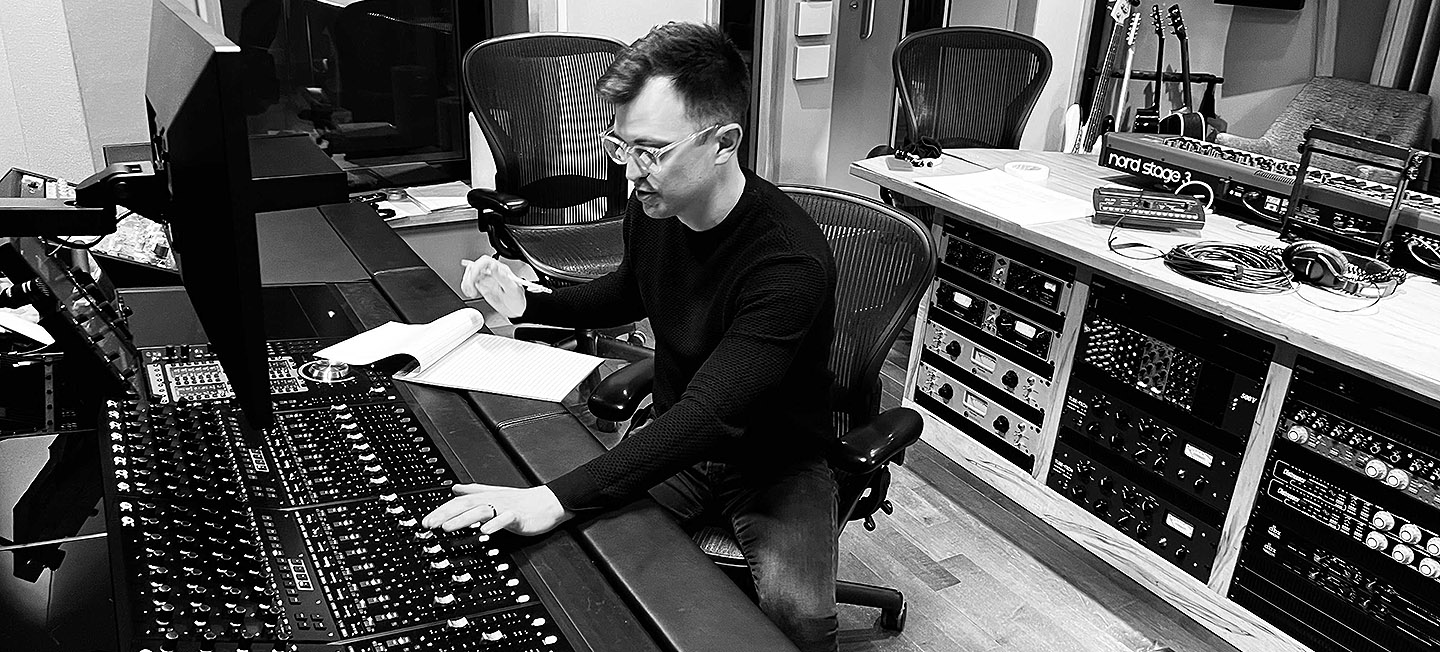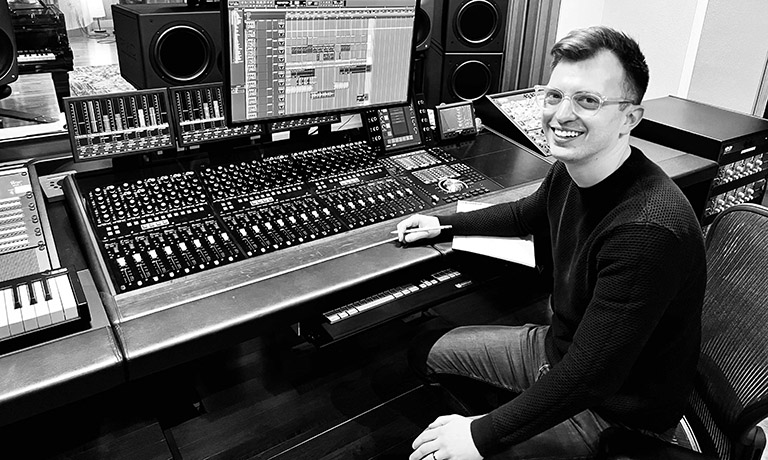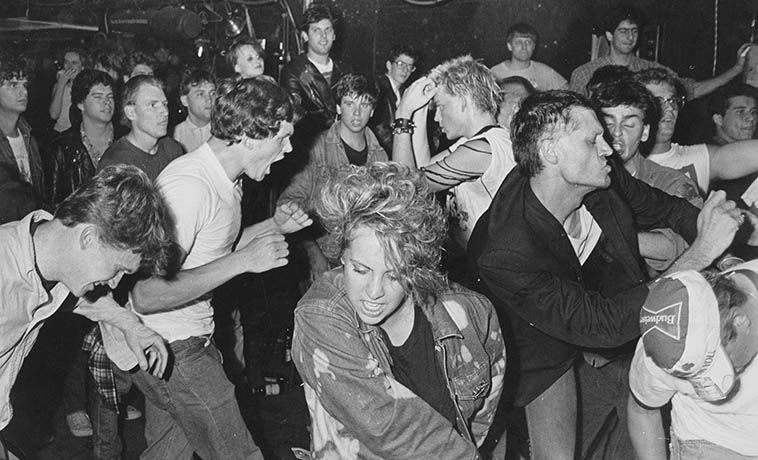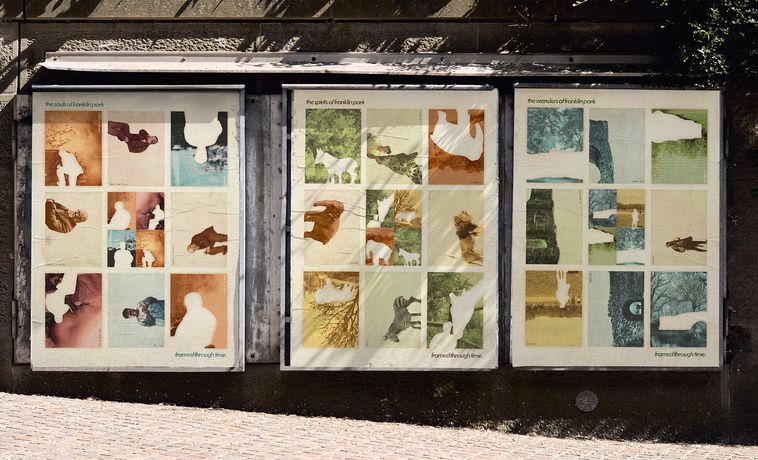Scoring the Soundtracks of our Lives
A Q&A With Alex Coutts of Made Music Studio

Alex Coutts, senior vice president, head of experience at Made Music Studio, is leading their newly formed practice focused on creating music and sound for themed attractions, transportation, corporate workspaces, retail and other physical spaces. Images courtesy Alex Coutts.
From Brylcreem’s 1950s commercials (“a little dab’ll do ya”) to contemporary Liberty Mutual campaigns (“Liberty, Liberty, Liberty”), companies have used catchy musical jingles to hawk their products for more than a century. Today, some of the world’s biggest companies are investing more than ever in sound—moving beyond jingles to create soundtracks for every action and experience associated with their brands. And to meet their sonic branding needs, many of these companies turn to Made Music Studio.
From the chords we hear when we sit down to watch HBO to the four-note tone at the end of an AT&T ad to the sound an iRobot Roomba makes when it returns to its dock, Made Music Studio is making waves in global advertising.

The company is now expanding its offerings to score soundtracks for the spaces we inhabit—and Alex Coutts, senior vice president, head of experience, is leading their newly formed practice focused on creating music and sound for themed attractions, transportation, corporate workspaces, retail and other physical spaces. For example, for longtime client American Express, they’ve designed a custom branded ambience for the company’s airport Centurion Lounges. That background noise, Coutts (’11) says, “evolves over time without hitting you over the head. And over repeat visits, you come to connect that sound to that premium experience.” They’re also thinking about the day when physical credit cards become obsolete, creating a payment sound that users will hopefully associate with American Express—and security—when they purchase something with their phones.
Coutts and his team have designed an immersive sound experience for the AT&T Discovery District near the company’s world headquarters in Dallas and scored the soundscape passengers will experience on the space-age Virgin Hyperloop. They’re even partnering with companies to develop custom office soundtracks aimed to keep workers productive and worry-free. But with so much, ahem, noise in the advertising marketplace today, can Made Music Studio help brands grab consumers’ attention?
COMtalk caught up with Coutts, who lives in Brooklyn, to ask him about the promise—and risks—of sonic design.
Q&A
With Alex Coutts
COMtalk: What is sonic branding?
Coutts: It’s extremely comparable to visual branding in that any entity, space or brand needs distinctive assets to bring forward emotions and attributes that are uniquely them. Think of a visual logo, how that’s used as the end card of communications and across different collateral as a unique brand identifier. We hold a sonic logo in a similar way—it is really a stand-in for your visual logo.
COMtalk: Is there a risk of bombarding people who don’t want to be marketed to, with sound or otherwise?
Coutts: From an advertising perspective, I think there are definitely bad versions of sonic branding. Sometimes there are strong memory triggers, but you remember them for the wrong reasons. Across all of our work, even if the ask is to create a memory trigger, we want to create something that makes positive emotional connections that are thoughtfully composed and hopefully pleasing to the ears. We also work with our clients to research their sounds before launch, assuring that we’re not creating work that exhausts listeners. We want to make sure that if you’re using your product or having an experience, you can turn that sound off and also personalize it with different options.
COMtalk: Your work goes beyond merely creating sounds that sell products, to sounds meant to enhance an experience. What is that? Why is that a good thing?
Coutts: We’ve been helping brands build out spaces, working with audio-video integrators and architects to create 360-degree sensory experiences like AT&T Discovery District in Dallas. For physical spaces, sound is routinely an afterthought. You wouldn’t assume so—we all understand innately the power of a shared human experience with music and sound, like going to a concert. I think all of us who were unable to go to a concert for two years are hungry for that experience again. There is magic to that. When you do it right, and embrace music and sound as a source of emotional connection, it’s truly something special.
COMtalk: Can you use sound to make people happier or more productive at work?
Coutts: When it comes to playlists in places like offices or businesses, people notice loops. And once we notice something is on a loop, we start to ignore it. We just partnered with Spatial, an immersive audio platform that allows us to customize audio behaviors, so that music and sound in a space is always unique and evolving. You could come into the same room 100 times and never hear the same thing twice. We’re learning that on a subconscious level the right ambient soundscape can get you into a state of relaxation and productivity that is notably better than your normal office experience. As many businesses are trying to get people to come back to the office, and as we redefine what value an office holds and what it can offer employees, we’re looking to sound as a key differentiator in work-from-home versus in-person work.
COMtalk: What is the future of sound branding? Are there limits to curated sound?
Coutts: I’m excited about two things. One is unlocking the power sound can have on shared spaces, especially given the last two years as people are coming back to offices, large transportation hubs and even large gatherings like concerts and festivals. We can use sound to make environments more inclusive and make people more comfortable in what could be stressful situations, but we also have the opportunity to create those awe-inspiring moments where the hairs on the back of your neck stand up.
The other thing is that technology is advancing quickly. We’re currently working on a couple of projects around vehicles and products that are going to be fully autonomous. Sound can give personality to new technology, but there’s also an inherent anxiety surrounding emerging tech that we need to help alleviate. Imagine calling an autonomous vehicle service for the first time. There might be some nerves involved, some hesitancy, some anxiety. We’re not looking to incorporate sound for sound’s sake; we’re asking, “what is going to make that experience more intuitive and stress-free? How can sound improve that experience?”
So, as technology continues to evolve, there’s this ability for sound to convey the right information, humanize these new experiences, and hopefully make it all a little less scary.
This interview has been edited for clarity and brevity.


